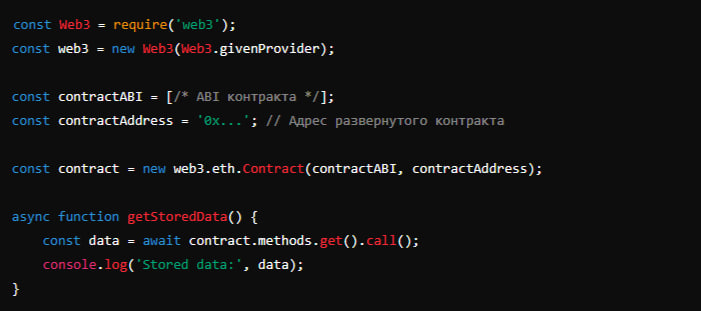Decentralized applications, or dApps, are gaining more attention every day due to their unique potential to transform various industries, providing users with more control over their data and interactions. Unlike traditional applications, dApps operate on blockchain technology, making them decentralized, transparent, and resistant to manipulation. This opens up vast opportunities for developing new solutions in areas such as finance, governance, gaming, social networks, and much more.

Understanding the Basics of dApps
Before diving into creating your own decentralized application (dApp), it is crucial to deeply understand its structure and the key aspects that differentiate dApps from traditional centralized applications. This knowledge will help you avoid common mistakes and make the most out of blockchain technology.
dApp Structure
Decentralized applications (dApps) are software that operates on blockchain networks. Unlike traditional applications, which typically run on a central server, dApps distribute their data and logic across the network, making them decentralized. The basic structure of dApps consists of three key components:
-
Smart Contracts: Smart contracts are the core of dApps, acting as the backend. They are pieces of code stored and executed on the blockchain. Smart contracts automate operations and ensure data immutability since any code written on the blockchain cannot be altered without the consensus of the network participants.
-
Frontend: The frontend is the user interface (UI) through which users interact with the dApp. It can be written in any programming language and framework, such as React or Vue.js. The main task of the frontend is to provide easy access to the smart contract functionality through an interface that is intuitive and user-friendly.
-
Blockchain: The blockchain serves as the database and infrastructure for the dApp. All data and logic embedded in smart contracts are stored on the blockchain. Ethereum is the most commonly used platform for developing dApps, but other blockchains such as the Binance Smart Chain, Polkadot, and Solana also offer similar capabilities.
Key Aspects to Understand Before Creating Your Own dApp
Before starting the development of your dApp, it is essential to recognize several key aspects that define the specificity and uniqueness of decentralized applications:
-
Decentralization: The primary feature of dApps is the absence of a central authority. All network participants are equal, and data is distributed among them. This ensures resistance to censorship, security, and transparency. However, developing a dApp requires understanding that the process of deploying and updating smart contracts is more complex and requires more planning than in centralized applications.
-
Data Immutability: Once code or data is written to the blockchain, it cannot be changed without network consensus. This makes dApps extremely secure but requires developers to pay special attention when writing smart contracts, as any errors in the code can lead to undesirable consequences.
-
Transparency and Openness: All transactions and operations within a dApp are public and can be verified by any network participant. This increases trust in the application but simultaneously requires developers to ensure privacy where necessary.
-
Token Management: Many dApps use their own tokens to manage access to functionality or as an economic incentive for users. It is important to understand how tokens are created and used, and how they will integrate into your dApp's business model.
-
Transaction Costs: Each operation in a dApp requires the payment of "gas"—a fee for using the blockchain's computational resources. Developers need to consider these costs when designing the logic of smart contracts to minimize expenses for users.
Understanding these aspects will help you create an effective, secure, and user-friendly decentralized application capable of competing in the market and benefiting users.
dApp Creation Guide
Creating your first decentralized application (dApp) might seem like a daunting task, especially if you're just starting to explore the world of blockchain technology. However, by following a step-by-step guide, even beginners can master the basic principles of development and create their first dApp.
Step 1: Defining the Goal and Idea
The first step in creating a dApp is to choose an idea. Think about the problem you want to solve using blockchain technology. Your application should leverage the benefits of decentralization, such as transparency, security, and the elimination of intermediaries. Examples of ideas include creating a decentralized asset exchange platform, a voting application, social networks, or even games. The main goal is to clearly define the purpose of your dApp and understand how blockchain can help achieve it.
Step 2: Learning Basic Technologies
Before you start development, you need to familiarize yourself with the basic technologies used in creating dApps:
- Blockchain: Understanding the principles of blockchain operation and its architecture. Ethereum is one of the most popular platforms for developing dApps.
- Smart Contracts: Study the Solidity programming language, which is used to write smart contracts on Ethereum.
- Web3.js: This is a JavaScript library that allows interaction with the blockchain from your frontend.
- MetaMask: A cryptocurrency wallet used to interact with the dApp.
There are many resources, courses, and documentation available to help you master these technologies. Dedicate enough time to this so that you feel confident during the development phase.
Step 3: Writing and Testing the Smart Contract
The smart contract is the heart of your dApp. It defines the application's logic and manages user interactions. Start by writing a simple smart contract in Solidity that performs basic functions like storing and transferring data.
Example of a simple smart contract:

After writing the smart contract, it is necessary to test it. Use tools like Ganache to create a local blockchain for testing. This will allow you to identify and fix errors before deploying the contract to the main network.
Step 4: Developing the User Interface (Frontend)
After creating the smart contract, proceed to develop the interface that will interact with it. You can use frameworks like React or Vue.js to create a user-friendly and intuitive interface.
Integrate Web3.js into your frontend to interact with the blockchain. Example of connecting to a smart contract via Web3.js:

This code allows your frontend to interact with the smart contract functions, enabling users to perform actions through the interface.
Step 5: Deploying the Smart Contract and dApp
After completing the development and testing of your smart contract, it's time to deploy it on the main network, such as Ethereum. For this, you can use Truffle—a popular framework for developing and deploying smart contracts.
- Create and configure a migration file for the contract.
- Set up Truffle for deployment on the main network (e.g., via MetaMask).
- Run the command truffle migrate --network mainnet to deploy the contract.
After that, deploy the frontend on a hosting platform (e.g., on IPFS, AWS, or another server). Your dApp is now ready for use.
Step 6: Monitoring and Supporting the dApp
After deployment, it's important to monitor your dApp's performance. Use tools like Etherscan to track transactions and ensure that your smart contract operates smoothly. User support and regular updates to the application are also essential for the successful operation of your dApp.
After deploying the dApp, it's important to ensure its stable operation and keep it up to date. The table below outlines key tasks and tools for monitoring and supporting your application.
| Task | Tools | Description |
|---|---|---|
| Transaction Monitoring | Etherscan | Real-time tracking and analysis of transactions. |
| Smart Contract Auditing | MythX, OpenZeppelin | Security analysis and monitoring of smart contracts. |
| dApp Performance | New Relic, Datadog | Monitoring the application's performance. |
| User Support | Zendesk, Intercom | Managing user feedback and support requests. |
| Gas Cost Monitoring | EthGasStation, GasNow | Tracking and optimizing transaction costs. |
These tools will help ensure the smooth operation of your dApp and maintain a high level of user satisfaction.
Creating a decentralized application (dApp) is an exciting process that opens up new opportunities in the field of technology. The steps covered address all aspects of development, from understanding the structure and principles of dApps to the implementation and deployment of a finished product.
Every stage—from planning and idea selection to smart contract development and user interface creation—requires a careful approach and deep immersion in the process. The use of advanced technologies, such as blockchain and smart contracts, allows for the creation of applications that provide security, transparency, and decentralization.
The final stage is the deployment and monitoring of the dApp, ensuring its availability and stable operation in the real network. This process requires consideration of all aspects, from transaction management to user interaction.
Thus, creating a dApp becomes a powerful tool for solving many tasks, opening new horizons for developers and users. This experience not only allows the realization of a specific project but also contributes to a deeper understanding of how decentralized technologies can change the conventional approaches to software development.




